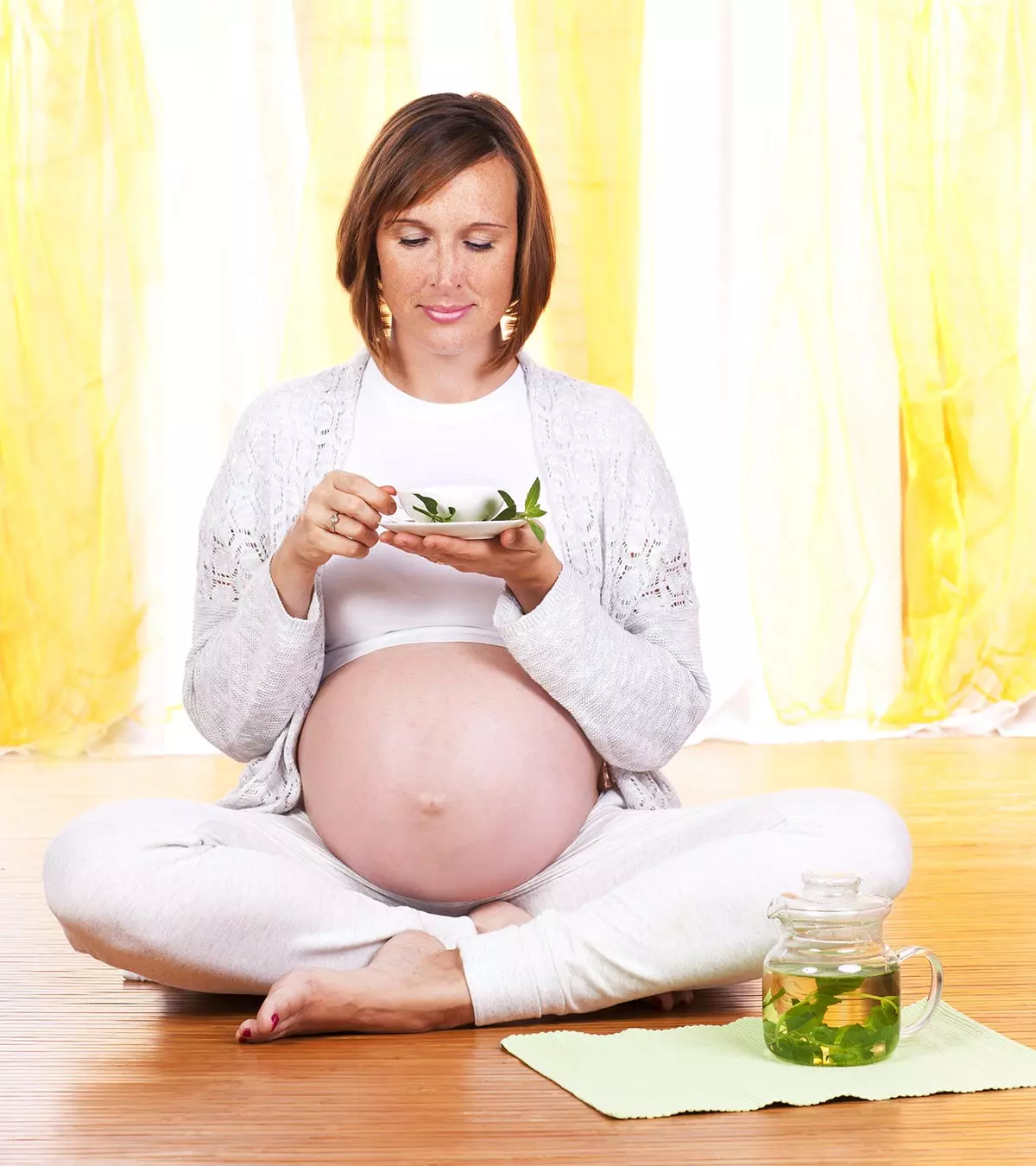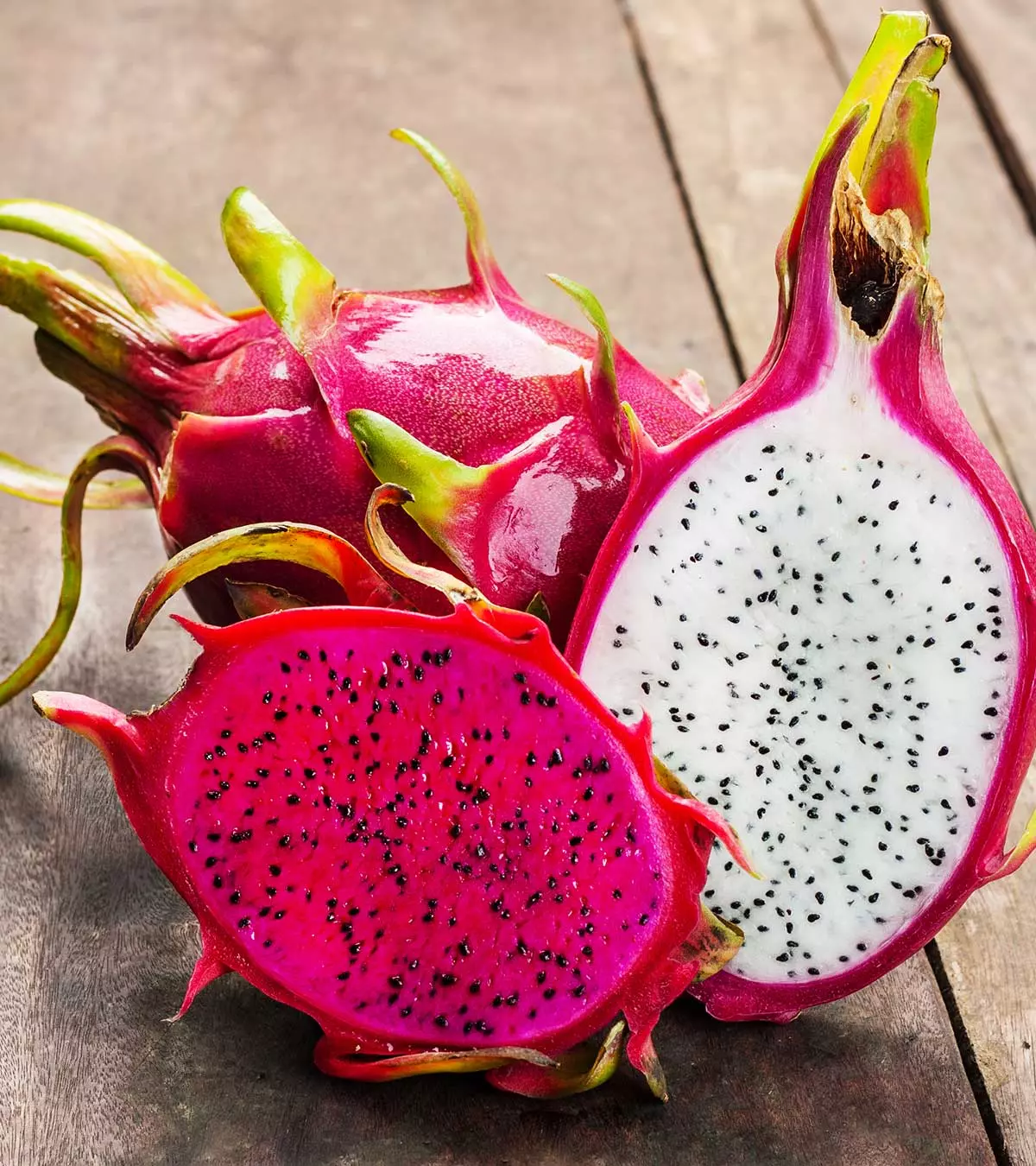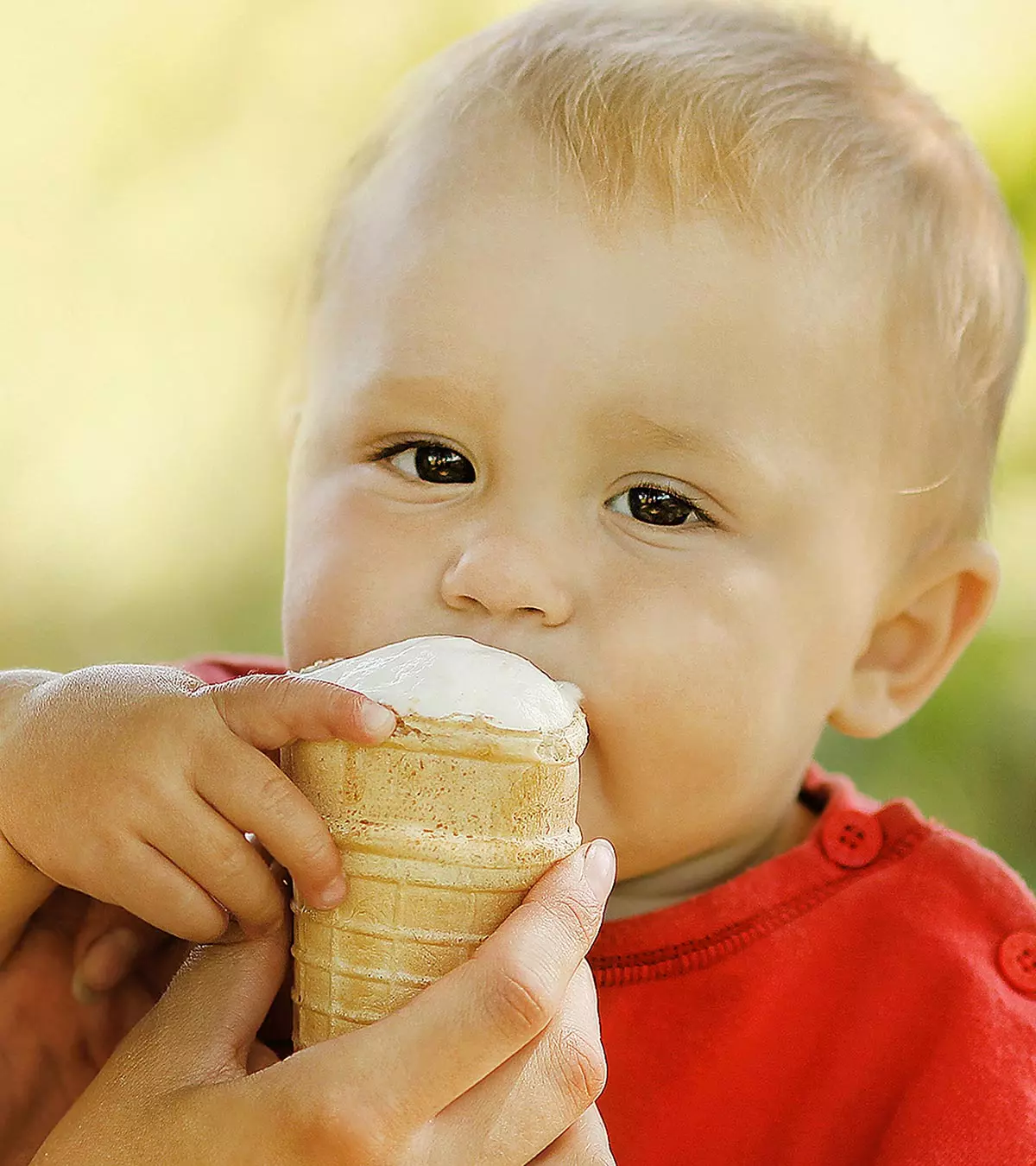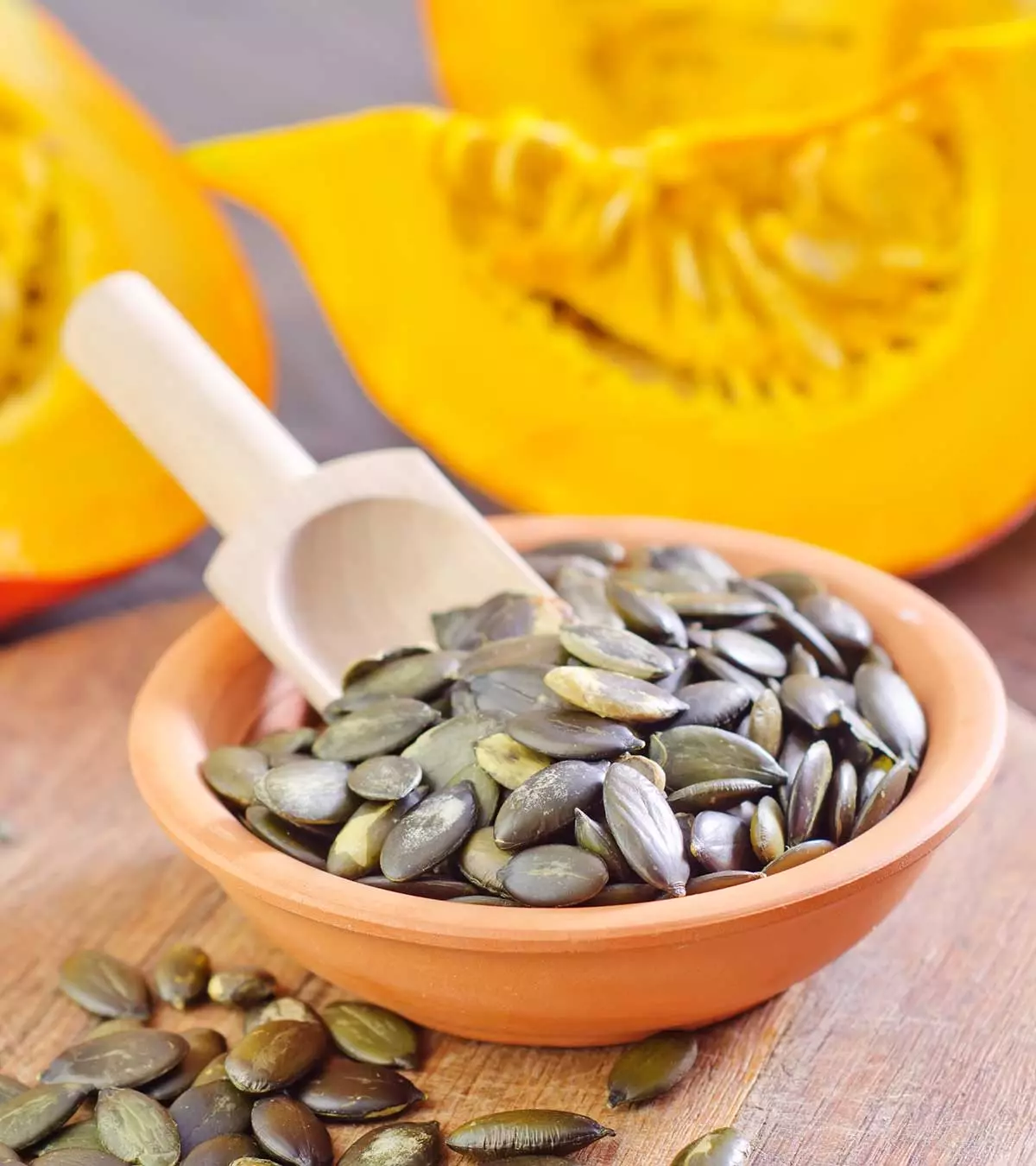
Image: Shutterstock
Tuna is among the most consumed fish in the world. The United Nations even celebrates “World Tuna Day” on the second of May to mark the economic and nutritional importance of the fish (1). However, you may be doubtful about the safety of tuna for babies as it is quite likely to contain mercury, which may have adverse effects on your baby’s health (2). Keep reading this post, where we provide more information about the health benefits of tuna for babies, precautions to observe, and recipes to prepare delicious fish dishes for infants.

Key Pointers
- Tuna can be included in your baby’s diet a few days after starting solids if the pediatrician approves.
- It is a rich source of proteins and essential nutrients required for the baby’s proper development.
- Tuna mash pie, grilled tuna, and a few other recipes as you read along.
Types Of Tuna – What Is Safe And What Is Not?
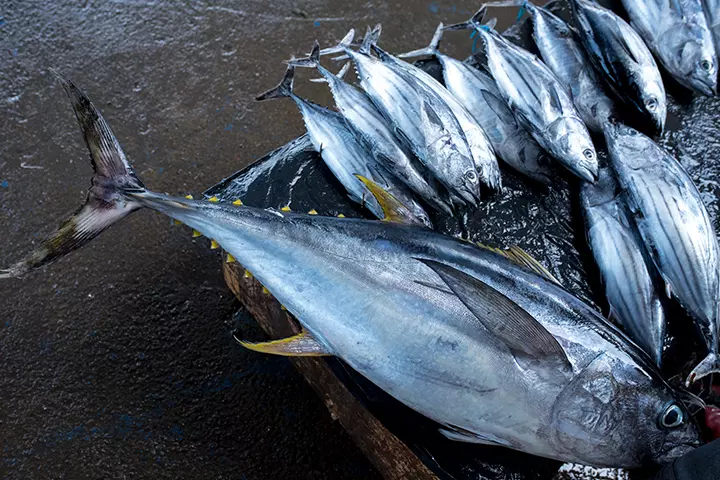
There are a total of 15 species of tuna, out of which five commercially important tropical species are most commonly used as food. These species are yellowfin, bigeye, bluefin, skipjack, and albacore (3).
Internationally, tuna is used fresh, frozen, or canned. As per FDA, the best choices of tuna are light canned skipjack tuna, canned/fresh/frozen albacore, yellowfin, and white tuna.
The FDA recommends avoiding bigeye tuna (4). These recommendations are made on the basis of mercury levels and other contaminants that might be present in the fish.
Can Babies Eat Tuna?
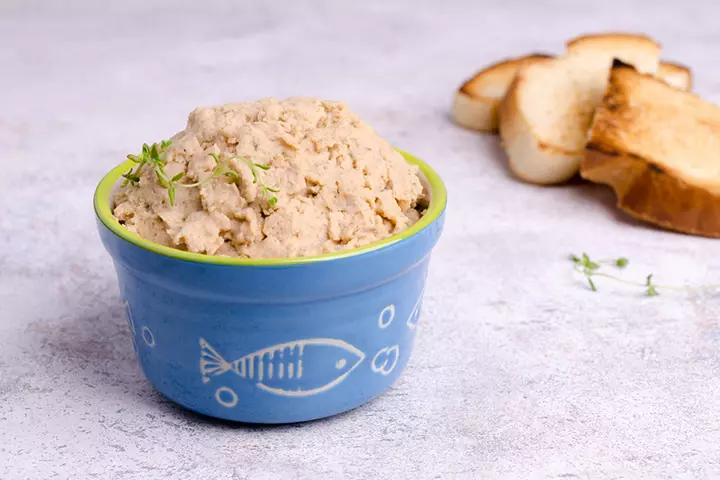
Yes, babies can eat tuna. However, the right age to include it in your baby’s diet is not clear.
According to the American Academy of Pediatrics, a baby’s diet can include fish within a few months of starting solids (5). Therefore, once your infant shows the signs of readiness for solids, then you can consider introducing tuna. However, it is best to consult a pediatrician before you feed tuna to your baby.
Washington-based registered dietitian Alicia Chacha Miller says, “Introducing tuna to babies can be a great way to add protein and nutrient-dense fats to their diet, but it’s important to note that moderation is key. While fish is a common allergen, studies suggest early, consistent exposure to allergenic foods may reduce the risk of allergies later. Additionally, choosing low-mercury options and serving them in small portions can help minimize potential risks while providing valuable nutrients.”
How Much Tuna Can A Baby Eat?
The updated US FDA and EPA recommend the consumption of one ounce (28 grams) of fish per week for kids aged one year to 3 years. This recommendation mainly includes marine-derived “oily fish”, such as tuna. The FDA further recommends that canned, fresh, or frozen albacore white tuna and yellowfin tuna are considered as the ‘good choices’ fish and should be given only a serving per week for babies, but canned light skipjack tuna is among the ‘best choices’ and can be given two servings per week (4) (6).
However, for babies below one year of age, no specific serving size per day or week has been mentioned. To decide on a safe intake limit, consultation with a pediatric nutritionist is advisable.
Nutritional Value Of Tuna
Apart from being a good source of essential nutrients like omega-3 fatty acid, selenium, iron, and vitamin-D, tuna has plenty of protein, too (7)(8).
Below is the approximate nutritional composition of 100 grams of fresh tuna.
| Name | Amount | RDA |
|---|---|---|
| Water | 74.03g | – |
| Energy | 109Kcal | – |
| Protein | 24.4g | |
| Total lipid (fat) | 0.49g | |
| Calcium, Ca | 4mg | 210mg (0-6 months) 270mg (7-12 months) |
| Magnesium, Mg | 35mg | 30mg (0-6 months) 75mg (7-12 months) |
| Phosphorus, P | 278mg | 100mg (0-6 months) 275mg (7-12 months) |
| Potassium, K | 441mg | 500mg (0-6 months) 700mg (7-12 months) |
| Sodium, Na | 45mg | 120mg (0-6 months) 200mg (7-12 months) |
| Selenium, Se | 90.6µg | 12µg |
| Niacin | 18.475mg | 5.4mg |
| Folate, total | 2µg | 24µg (0-6 months) 32µg (7-12 months) |
| Choline, total | 65µg | – |
| Vitamin B-12 | 2.08µg | 0.1µg |
| Vitamin D (D2 + D3) | 1.7µg | 10µg |
Sources:
U.S. Department of Agriculture (9) and World Health Organization (10)
Health Benefits Of Tuna For Babies

Below are some benefits that your baby could reap by consuming tuna in a well-balanced diet.
- Growth and development: Coldwater fishes such as tuna are an excellent source of omega-3 fatty acids, such as DHA and EPA (11). Both EPA and DHA are essential fats that are required in optimum amounts to support the proper growth and development of your baby’s eye, brain, immune, and nervous system (12).
- Physiological functions: Protein helps in the regulation of various body functions crucial for sustenance (13). Tuna has a considerable amount of high-quality protein, which can be helpful in the healthy growth of the baby (14).
- Bone development: Vitamin-D is a fat-soluble vitamin that is necessary for calcium absorption. Besides, it is required to perform various other functions such as regulation of neuromuscular processes and hormone production in the body (15). Tuna is considered as an essential source of vitamin-D, considering the nutrient is naturally found in very few foods (16).
- Overall health: Tuna is a good source of various micronutrients such as magnesium, phosphorous, potassium, sodium, selenium, and thiamine. Owing to these nutrients, regular consumption of tuna could have beneficial effects on the overall health of the baby in the long run.
Dr. Aaron Bernstein, MD, MPH, FAAP, an executive committee member of the American Academy of Pediatrics Council on Environmental Health emphasizes on the benefits of including fish, like tuna, in a baby’s diet. He says, “For families who eat meat, fish should be a welcome part of a child’s diet. We’re encouraging pediatricians to ask families about fish and shellfish consumption–since most children don’t eat much beyond the occasional fish sticks–and advise them on the healthiest choices.” A study report from the American Academy of Pediatrics (AAP) led by him also states that the early introduction of fish in a child’s diet can even protect them against allergic diseases, such as asthmaiA chronic lung disease caused by inflammation and narrowing of the muscles around the airways. and eczemaiAlso known as atopic dermatitis, it is a chronic skin condition that causes dryness, inflammation, itchiness, and redness of the skin. (17).
As you know the benefits, it is also wise to know the possible side-effects of consuming tuna.
Risks Of Tuna For Babies

Tuna (fresh/canned) is associated with mercury exposure. As per WHO consideration, mercury is one of the top ten chemicals of major public health concern (18). Exposure to mercury during the early years of life can cause serious health effects on the nervous, immune, and digestive systems.
Besides mercury, canned tuna has other possible contaminants due to commercial handling and processing. A few examples are the elements lead and cadmium, which can be bad for health too. Therefore, the Office of Community and Public Health, USA (OCPH) recommends “avoiding excessive amounts of tuna in diet”. Eating one can per week should not be a problem for children under six years of age (19). However, it is best to stick to an ounce or less for babies. Consult a pediatrician or pediatric dietician to learn the safe quantity of tuna for your baby.
 Be watchful
Be watchful, headaches, cognitive and motor dysfunction, and insomniaiA sleep disorder that disrupts the quality of sleep, characterized by the inability to sleep or to stay asleep. (17).
Safe Ways To Introduce Tuna Into A Baby’s Diet
If you decide to introduce tuna into your baby’s diet, these tips can help you do it safely and nutritiously:
- Keep in mind your baby’s age and readiness toward solid foods.
- Choose the right tuna and the safest option available.
- Choose light tuna canned in water than those packed in oil to avoid extra calorie and sodium content (20).
- If using fresh tuna, make sure to wash and cook them properly. According to the US Food Safety rules, fish such as tuna should be cooked at an internal temperature of 145°F (63°C) or until the flesh is not translucent anymore and can be separated easily with a fork (21).
- Ensure to mash tuna or make it in baby-friendly pieces so they are no longer choking hazards.
- Look for baby-friendly recipes to serve tuna.
- Avoid adding extra salt or seasoning.
Precautions To Take While Introducing Tuna To Babies
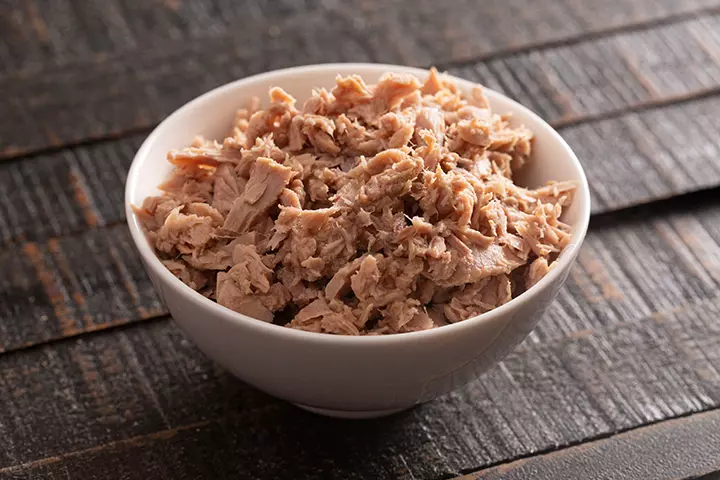
Below is a list of precautionary steps to observe when feeding tuna to babies.
- Acknowledge the fact that all tunas can be possibly contaminated. It may not always be possible to avoid mercury entirely. So look for options with less mercury over the ones with possibly higher levels. Canned tuna, especially white, tend to have high amounts of mercury, whereas canned light tuna is considered to have low levels of mercury.
 Expert says
Expert says- Follow FDA’s latest advice about eating fish. It will help you choose the best for your baby and yourself.
- Check for labels while you are buying canned tuna. Labels will help you identify the safest option available over the shelf.
- As you prepare tuna for your baby, ensure that you remove bones. This is important if you are using fresh tuna instead of canned.
- While feeding babies, start with small amounts. Watch for the possible signs of fish allergy or intolerance. If any concerns are observed, discontinue feeding immediately. According to the American College of Allergy, Asthma, and Immunology (ACAAI), fish is one of the common allergens that account for approximately 90% of all allergic reactions (22). Hence, staying vigilant for potential allergic reactions is preeminent.
- Avoid introducing tuna with any other new food. Wait for at least 3–5 days before introducing another new food. It can help you determine allergies easily and might also prevent any cross-reaction with other food items.
- To know more about the levels of mercury, see the FDA food safety website or the EPA website. You can also look for your local advisories, especially for tuna caught fresh.
- If your family has a history of allergies, make sure to consult your pediatrician before introducing tuna.
As always, make sure there is variety in your child’s diet, just because fish is a good source of nutrition, do not forget it has its hazards as well.
Precautionary steps, when followed accurately, mitigate the potential health risks associated with tuna.
Let’s check some interesting recipes that you could try for your baby.
Tuna Recipes For Babies
Tuna puree is the simplest option to choose when introducing tuna to the baby for the first time. Once your baby gets comfortable with it, then you can try these interesting and nutritionally sumptuous fish recipes for babies.
1. Tuna Mash Pie

An ideal tuna recipe since it is easy to swallow and is nutritionally balanced.
You will need:
- 1 small potato (peeled and diced)
- 1 cup broccoli
- 20g tuna (canned, light)
How to:
- Take a thick bottom pan and boil potatoes in water for 15 minutes.
- Mash the boiled potato with a fork until you get a rough paste.
- Next, wash and separate the broccoli florets. Put the cleaned florets and tuna in another pan and boil them for about 10 minutes.
- Drain the water and add the mashed potato to the cooked broccoli and tuna.
- Stir together until all mixed. Serve the dish warm
 Quick tip
Quick tipSharing an interesting an easy-to-make tuna recipe for child, Joy, on her blog named ‘The Flaming Potato’ says, “Often when I have leftover tuna mayo mix I try to use it up by mixing it with something that my son loves. Today I made mashed potato, so I mixed in the tuna and added boiled vegetables. It was a great hit. Hubby had a portion too so these can be easily eaten by adults as well. Fast food goes healthy and non fried!” Sharing the recipe, she writes, “Boil the potatoes until fully cooked through. Mash it and add butter and milk. Season with salt and pepper. Boil the frozen vegetables. Once done, mix everything with the tuna mayo mix (i).”
2. Grilled tuna with avocado and cucumber
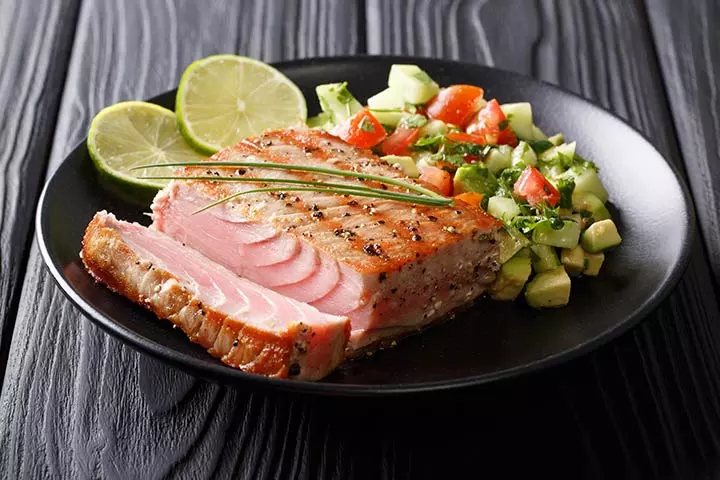
You will need:
- ¼ cucumber, diced
- 1 cup small tomatoes or cherry tomatoes, sliced
- ½ tbsp finely chopped fresh ginger
- 3 medium onions, chopped
- 1 tbsp lime juice
- ¼ tsp salt
- 1 avocado, thick slices
- 2 fresh wild tuna steaks (approx. eight ounces or 226 grams)
- 1 tbsp sesame seeds, roasted
- Extra virgin olive oil
How to:
- Take a medium-sized bowl, put the cucumber, tomatoes, ginger, onions, lime juice, one tablespoon olive oil, and salt.
- Mix everything together well and then fold the mixture in the avocado slices.
- Meanwhile, heat the grill to medium-high.
- As the grill is getting heated, rub both sides of the tuna with oil.
- Grill each side for three to four minutes.
- Once done, slice the tuna and sprinkle sesame seeds.
- Serve hot with a homemade sauce of your choice.
Once your little one is comfortable with this meal, you can increase the nutritional value of their diet by serving tuna with avocados and nuts while being mindful of any allergies. This can offer a well-balanced meal that is abundant in omega-6 and omega-9 fatty acids, in addition to the omega-3 fatty acids already present in the tuna.
Frequently Asked Questions
1. Is tuna every day healthy for my baby?
Considering the high mercury content of tuna, children shouldn’t eat tuna every day (24).
2. Can I give my baby tuna mayo?
Yes, tuna mayo can be a delicious snack for babies that you can experiment with and add veggies of your choice (25).
3. Can babies eat tuna salad?
A baby may be given tuna salad if they are not allergic to any individual ingredient that comprises the salad. It’s important to check for allergies before introducing mixed food to the baby.
4. Are there any alternatives to tuna for babies?
Salmon, Trout and herring are good alternatives to tuna as they are rich in DHA and have low mercury content. Cod, catfish, tilapia, sardine, and anchovy are other good choices (26).
5. Can eating tuna in early childhood have any long-term benefits for health?
Consumption of tuna has been associated with many long-term health benefits, such as the reduction of triglycerides, blood clotting, and the risk associated with stroke, and irregular heartbeats (27).
6. Can consuming tuna have any effect on a baby’s sleeping patterns?
Fish rich in fats have been shown to be beneficial in improving sleep due to the presence of vitamin D and omega-3 fatty acids. Consumption of fish such as tuna, salmon and mackerel may have a role in melatonin production, a sleep-inducing hormone (28).
7. How should tuna be prepared for babies?
Always ensure that fresh tuna is thoroughly cooked before serving it to babies. If you opt for canned tuna, ensure it is packed in water to reduce sodium content. Avoid adding preservatives or sauces, as they may contain allergens.
Tuna for babies is a good choice for their overall strong growth and development due to the fish’s richness in omega-3 fatty acids, essential vitamins, and other micronutrients. However, since seafood allergies are not uncommon, check your baby for any allergic reactions after starting their tuna feed. If your child has a family history of allergies or you are in doubt, consult your pediatrician before feeding tuna to your baby. Nevertheless, as long as you feed your child an age-appropriate, safe quantity of tuna, you may include it in your baby’s diet.
Infographics: Does Canned Tuna Have Contaminants?
Fresh fish is less likely to have additives in them. Tuna, when canned, may acquire chemicals, besides mercury, from the packing materials or substances used to process and preserve the fish. The infographic below lists some contaminants that may be present in canned tuna.
Some thing wrong with infographic shortcode. please verify shortcode syntax
Illustration: Can Babies Eat Tuna? Benefits Risks And Precautions To Take

Image: Stable Diffusion/MomJunction Design Team
Whip up a super fast, healthy and delicious tuna puree recipe for your little one with help from this recipe video.
Personal Experience: Source
MomJunction articles include first-hand experiences to provide you with better insights through real-life narratives. Here are the sources of personal accounts referenced in this article.
i. Tuna and potato mash, toddler meals – recipe;https://theflamingpotato.blogspot.com/2015/11/tuna-and-potato-mash-toddler-meals.html
References
1. Is Your Tuna Sustainable?; United Nations
2. Mercury levels in tuna remain nearly unchanged since 1971, study says; ACS Publications
3. G D Khedkar and B V Jadhao et al.; Tuna and Tuna-like Fish of Tropical Climates; Science Direct
4. Advice About Eating Fish; FDA
5. Starting Solid Foods; Healthy Eating; American Academy of Pediatrics
6. Dietary Recommendations For Fish Consumption; National Center For Biotechnology Information
7. 20 Amazing Health Benefits Of Tuna Fish; Lifehack
8. Netting Billions: A Global Valuation of Tuna; PEW
9. Tuna, fresh, raw – (SURVEY (FNDDS), 337821); Food Data Central; USDA
10. Feeding and nutrition of infants and young children; WHO
11. Omega-3 Fatty Acids; National Institute of Health
12. Consider Omega-3 Supplementation For The Health Of Your Baby; American Pregnancy Association
13. Protein Structure and Function; National Center For Biotechnology Information
14. D.Khedkar et al.; Tuna and Tuna-like Fish of Tropical Climates; Science Direct
15. Vitamin D; National Institute of Health; U.S Department of Health and Human Service
16. Calcium and Vitamin D; National Osteoporosis Foundation
17. American Academy of Pediatrics Says US Children Are Not Eating Enough Seafood; American Academy of Pediatrics
18. Mercury and health; WHO
19. Waqar Ashraf; Levels of Selected Heavy Metals In Tuna Fish; Researchgate
20. Asim Maqbool et al.; The skinny on tuna fat: health implications; Public health nutrition
21. Cook to a Safe Minimum Internal Temperature; Food Safety
22. Food Allergy; American College of Allergy, Asthma & Immunology
23. Questions & Answers from the FDA/EPA Advice about Eating Fish for Those Who Might Become or Are Pregnant or Breastfeeding and Children Ages 1 to 11 Years; FDA
24. New Study: Mercury in Tuna May Present Greater Risk than Thought: Vermont Public Interest Research Group
25. Tuna mayo hot potato; NHS 26. Healthy Fish Choices for Kids; American Academy of Pediatrics
27. Omega-3 in fish: How eating fish helps your heart; Mayo Clinic
28. 7 Superfoods for Sufficient Sleep; PIH Health
Community Experiences
Join the conversation and become a part of our nurturing community! Share your stories, experiences, and insights to connect with fellow parents.
Read full bio of Jyoti Benjamin
- Alicia Chacha Miller is a registered dietitian specializing in maternal and pediatric nutrition. She holds an MS in Nutrition Science from the University of Southern California and founded Cardamom Nutrition.
 Alicia Chacha Miller is a registered dietitian specializing in maternal and pediatric nutrition. She holds an MS in Nutrition Science from the University of Southern California and founded Cardamom Nutrition.
Alicia Chacha Miller is a registered dietitian specializing in maternal and pediatric nutrition. She holds an MS in Nutrition Science from the University of Southern California and founded Cardamom Nutrition.
Read full bio of Swati Patwal
Read full bio of Rohit Garoo
Read full bio of Ghazia Shah







